Appreciating Bonsai
When appreciating bonsai, one ought to imagine a grand natural landscape compressed into a pot. The viewer should focus not just on the overall shape of the bonsai but also on each part of it, such as the roots, the trunk, the branches, and the foliage.
-
Roots, Nebari (Visible Root Spread)
The first part of a bonsai to appreciate is the spreading roots. The powerful vitality of the tree can be felt when noting how the roots have swelled with age through the years while maintaining a strong hold on the soil. An ideal root shape is called happō-nebari, which has visible roots spreading out in all directions. Some old trees, such as old Japanese maple trees, are also attractive for their bankon, or rock-like roots that grow in a carapace shape.
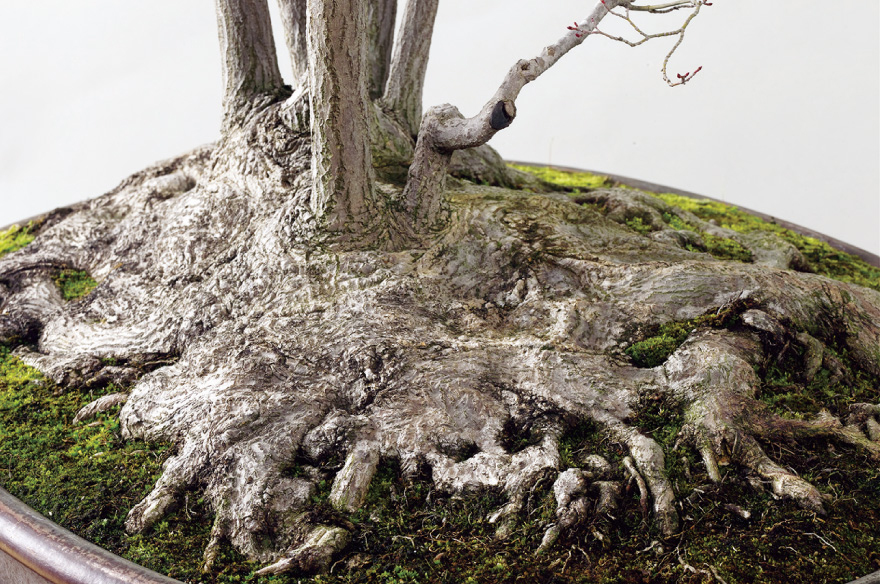
-
Bankon (Rock-like Root)
-
Trunk, Tachi-agari (the Lower Trunk)
The trunk, bearing up the tree, is another aspect of the bonsai to pay attention to. The part of the trunk from the roots to the first branch is called tachi-agari. From here, the tree spreads out as it rises, giving off the vigor of a mighty, full-sized tree. The bark of the trunk varies depending on the type of tree. For example, the bark of many pine bonsai possess appealing trunks with multiple layers of bark built up over many years.
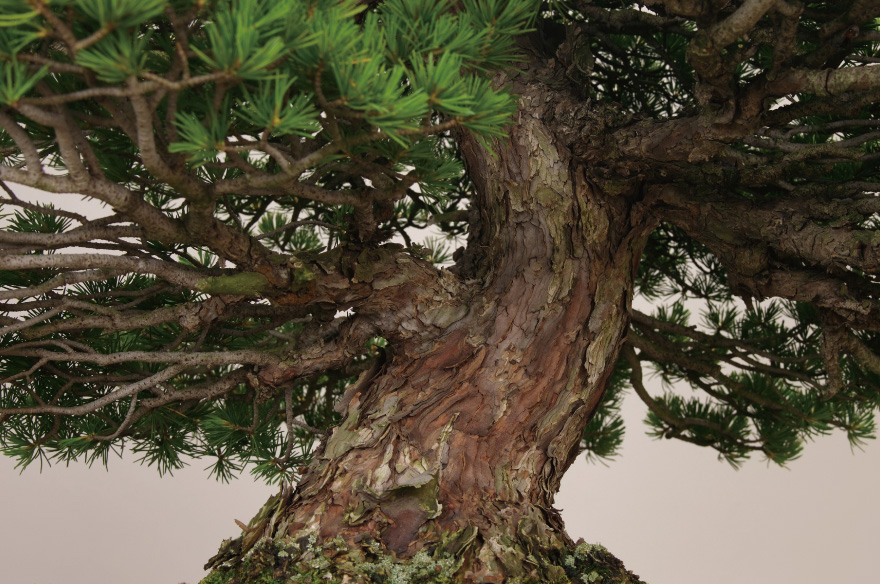
-
Tachi-agari of a Japanese White Pine
-
Branches, Edaburi (Gracefully-Shaped Branches)
The branches growing out of the trunk form the outline of a bonsai. One of the criteria for a quality bonsai is branches arranged in a pleasing balance without any ungraceful imi-eda, meaning “faulty branches”. Defoliated branches in winter are also beautiful, as one can see each individual delicate branch.
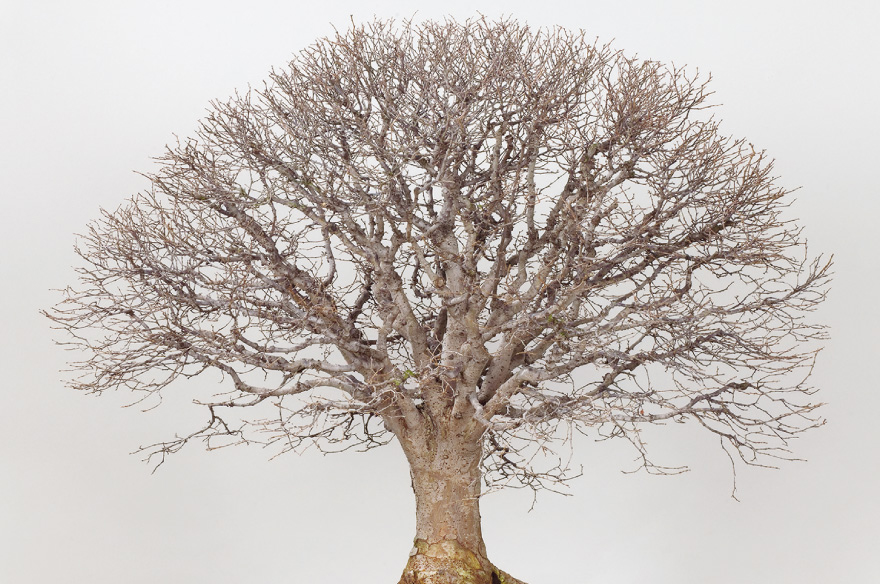
-
Japanese Zelkova After Defoliation
-
Foliage
Like the trunk, foliage greatly affects the impression one receives from a bonsai. Each individual tree has different characteristics in its leaves, even within the same species. For example, varieties of Japanese white pine with short, glossy needles are often used as bonsai. The foliage on trees such as Japanese maples can be especially appreciated in the autumn when they change color.
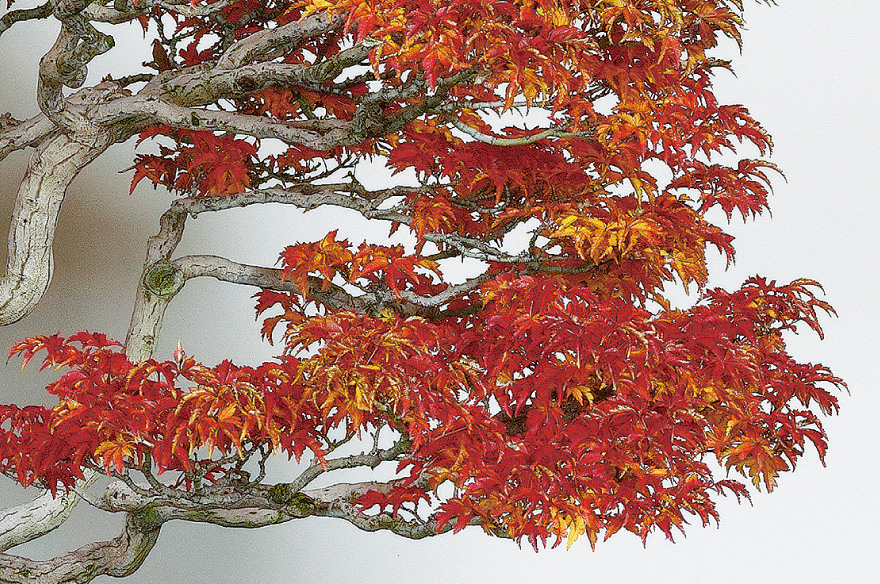
-
An Autumn Tinted View
-
Jin, Shari
The trunks and branches of trees such as pines and Japanese junipers can sometimes partially die through the passage of time, yet still maintain their shapes. Such trunks bring out a beautiful contrast between their green leaves and the revealed white surfaces of their dead wood. The perished tips on the branches are called jin, and the dead white parts of the trunk are called shari.
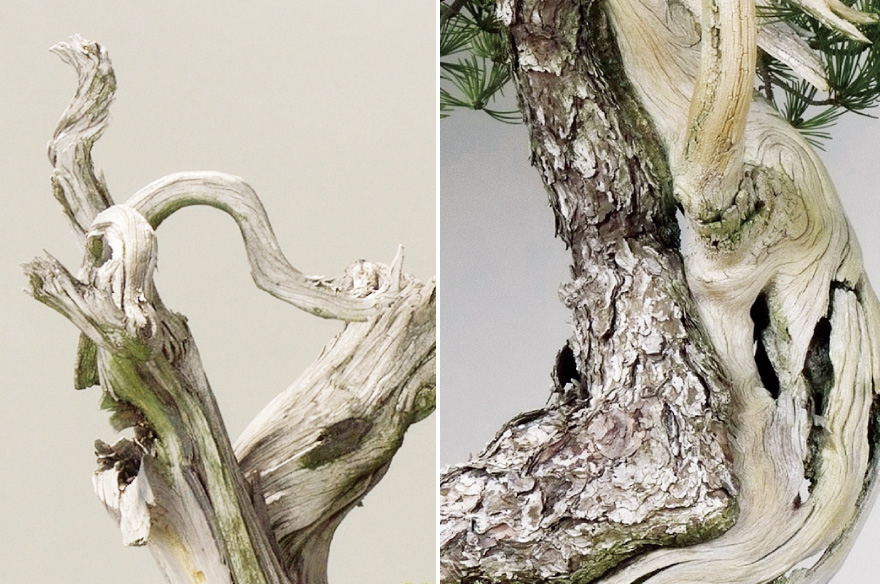
-
Jin・Shari



